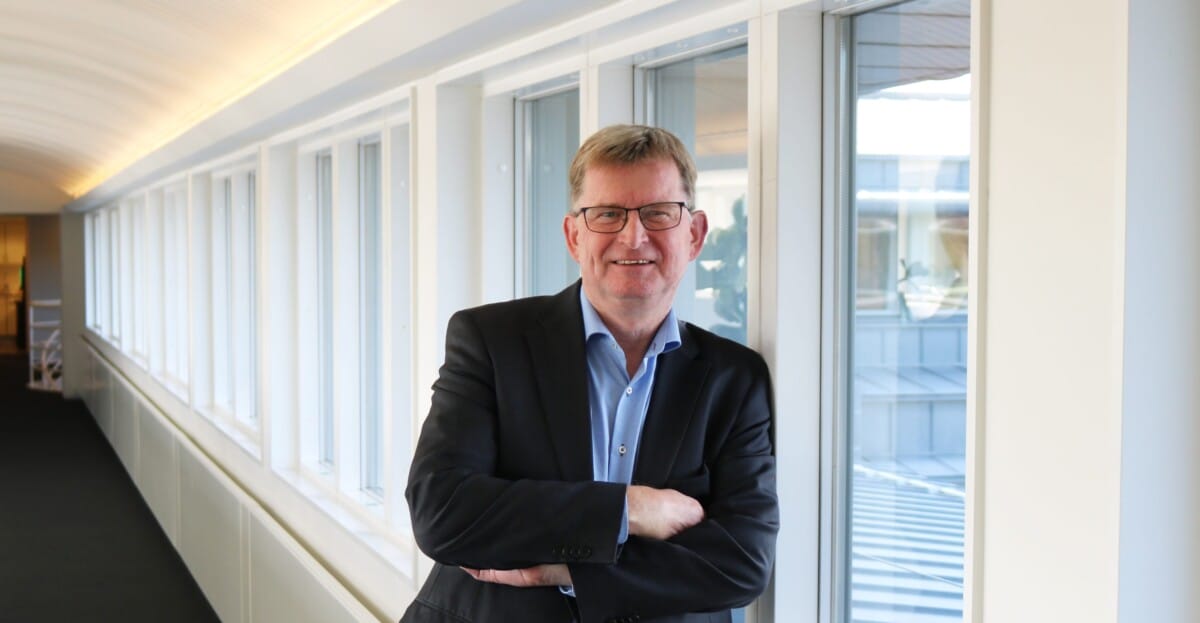By 2015, OMERS expects to be managing all its investments in-house, with each business unit doubling in size in the process. Amanda White spoke to chief investment officer Michael Latimer (pictured), about the plans to make the pension fund an investment house of choice for investors, investment targets and investment professionals. An ambitious investment plan to move to a strategic mix of 53 per cent public equities, and 47 per cent private investments, coupled with a move towards 100 per cent in-house management and attracting third-party investors to the organisation, means OMERS will need to create a business of choice for employees.
An ambitious investment plan to move to a strategic mix of 53 per cent public equities, and 47 per cent private investments, coupled with a move towards 100 per cent in-house management and attracting third-party investors to the organisation, means OMERS will need to create a business of choice for employees.
Not only will it need more investment professionals, but also it will need the best. The fund already employs a hoard of people. Its real estate business is an operating company so there are more than 1,000 people employed, the infrastructure business has about 60, private equity about 40, and capital markets about 150. And it has offices in Toronto, Calgary, London and New York, and an Asian office is expected soon.
Chief investment officer Michael Latimer says as part of the fund’s 2015 strategic planning, all businesses will double in the next couple of years.
The $53 billion fund’s long term asset mix is set by the board against the asset liability study, with the next strategy session set for April, and within that management can determine where investments can be allocated.
While other funds are clearing favouring particular asset classes, Latimer says that OMERS is focussed on “building all our books”.
“Anything we are building is scaleable. We want to attract more capital, because the quality of the assets we are interested in requires more significant dollars. To diversify our risk we want to get the opportunity to get world-class assets,” he says.
A few years ago OMERS revamped its investment operations and applications group, building its own technology, and Latimer puts a lot of credence on this platform in building the fund as a third-party provider.
“That capability gives me confidence,” he says. “That it is now totally scalable.”
The strategy to attract capital, and become a third-party provider of investment services for other pension funds, has a number of elements:
- There is the domestic capital raising – via OMERS Investment Management – which attracts domestic pension funds to OMERS. This was initiated about seven months ago, and Lattimer says he expects success in the back half of this year;
- Additional voluntary contributions, whereby the fund is tapping current membership to bring external mandates to the fund;
- and OMERS Strategic Investments, which is in the process of forming an alliance of like-minded co-investors committing up to $20 billion to be invested over five years in large-scale assets.
“In 2011 and the first half of 2012 we are securing these sources of capital.”
In addition to moving towards more private investments, OMERS is also moving to direct management of its money.
He says the capital growth and the expansion of all business units are attracting good staff.
“We now have about 90 per cent managed internally and the objective is to have 100 per cent by 2015, it is a fundamental shift,” Latimer says.
As part of that shift, he says the first thing is to create a performance-oriented culture.
“Step back from that, at another level, we’re a significant capital source and we’re going to grow significantly. We are expanding our asset classes and managing money internally and that equals a place where people want to work.”
But to hire the best people, he recognises they need to be paid in accordance with external providers.
“OMERS is developing a pay for performance culture with short-term and long-term incentives. Remuneration includes a base salary plus short-term annualised incentives and long-term program which varies for different asset classes.”
Each asset class attracts different skill sets. For example, the real estate team attracts real estate professionals, lawyers and accountants; the infrastructure team attracts engineers, accountants and investment bankers, and private equity attracts a combination of lawyers and investment bankers.
The fund attracts a lot of investment banking professionals, Latimer says “they are following the capital”.
“Where they used to view a pension fund as a training ground, the large sums of capital means the deals are more complex and interesting and so they’re attractive,” he says.
While OMERS is a big co-investor, Latimer says it still needs the skills of external investment banking professionals.
“Quality assets are not bought and sold in an off-market process,” he says. “But what we are doing is changing our line-of-sight in terms of the type and size of assets. We want to sit on top of the capital stack.
“We like co-investment partners because we think it is a good discipline, for example in the due diligence process it brings a second party of eyes. In addition the governance model is more thoughtful because you have a third party, it is a discipline with a third party. And the capital goes further.”
An example of that co-investment is the collaboration with ABP, called inkef capital, to seed an innovation and technology program to invest in their domestic knowledge economies. (see story here)
“The Ontario government wanted to promote venture capital and participation in early stage technology. We can use our collective clout to promote that platform, (so) opportunities will come,” he says.
Despite the seeming complexity of the investments and organisational structure of OMERS, Latimer says the fund is “not looking to shoot the lights out”.
“We are aiming for 7 to 11 per cent target returns, to decrease our volatility and stability of returns.”


